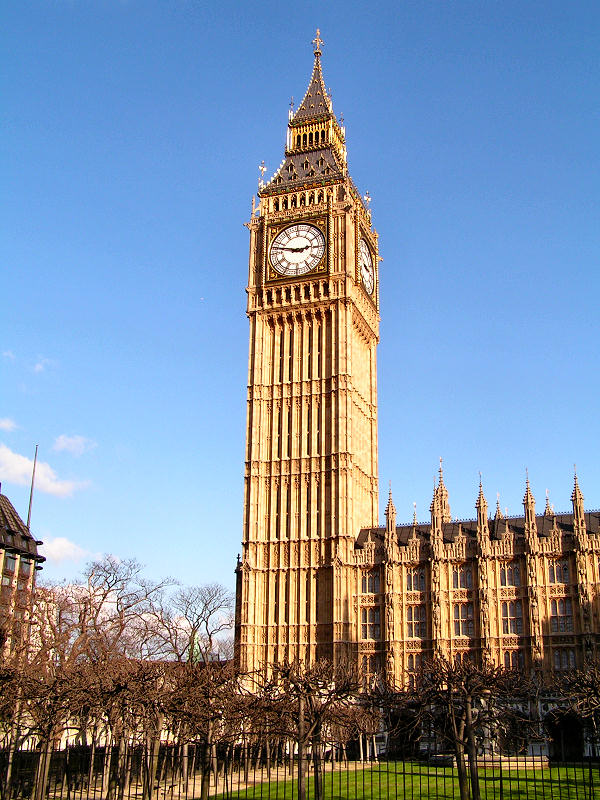
The worlds most photographed antique clock has been standing proudly to dominate London’s skyline for over 150 years. Big Ben is how everyone has come to call it, is the nickname for the great bell of the clock. Now everyone refers to Big Ben as the overall clock and tower. The tower as it so happens is to be renamed the Elizabeth Tower in honour of the Queen. This is to celebrate the Queen’s 60 year reign.
Great Tom
The clock tower as we know today as ‘Big Ben’ is not the first clock tower to stand in Parliament’s grounds. The first tower nicknamed ‘Great Tom’ was built in 1288-90. A second tower replaced the first in 1367 and this was the first chiming public clock in England. In 1707 this tower had fallen into a state of disrepair and was demolished. When a terrible fire destroyed most of the Palace of Westminster in 1834, architects submitted designs for the new Palace. Of the 97 designs submitted, Sir Charles Barry’s was picked. His design did not originally have a clock tower but this was added to his design in 1836. Construction of this tower began in 1843.
Dent Clockmaker
Clearly the manufacture of the mechanism for the clock needed to be done by a specialist. The Queens clockmaker at the time was Vulliamy and he wanted to design and make the clock. Other specialist clockmakers also believed they should make the clock. A series of disputes therefore resulted and it was decided to appoint a referee to make the decision on who made the clock. The decision was left to the Astronomer Royal, Sir George Airy. He set the standards by which the clock must keep, Denision a barrister and gitfted amateur clockmaker assisted in this decision.
Delays in Building Big Ben
All this led to delays in the decision. It was not until Feb 1852 that it was decided that Dent was to build the clock to Denison’s own design. Dent died in 1853 and so the clock was completed by Dents stepson, Frederick in 1854. It cost £2,500 to make. The tower itself was still not finished though and so the clock was kept at Dents factory in the meantime.
Denison Design
Denison made refinements to the clock while waiting for the clock tower to be finished (1859). He invented a ‘Double Three-legged Gravity Escapement’. This was a revolutionary and an ingenious invention and refinement. It made sure the pendulum was unaffected by external factors, such as wind pressure on the clock hands. A constant impulse was always applied to the pendulum. This escapement won worldwide acclaim, it is now known as the ‘ Grimthorpe escapement’, and Denision was later made Baron Grimthorpe in 1886 as a result.
Long Pendulum of Big Ben
The pendulum to the clock is 13 feet long and installed in a windproof box, it beats every 2 seconds. On top of this pendulum there are old coins. Adding weight to the top of the pendulum will lift the pendulum’s centre of gravity and thus shorten the effective length of the pendulum. This has the effect of speeding the clock up by just under half a second a day.
Symbol of London Big Ben
The clock has become one of the main symbols for the United Kingdom and London in particular. From the news programs like ITN to New Year celebrations, to General Election’s end of voting. Big Ben is the centre of our life. It stands proud and has had numerous years superb service. It has sted the test of time and London would not be the same without it. A truly remarkable achievement. The clocks Westminster Chime is typical of clocks after C.1860 and is found on many modern clocks. Most Georgian antique clocks just strike the hour on a single bell.
Daniel Clements – www.pendulumofmayfair.co.uk
